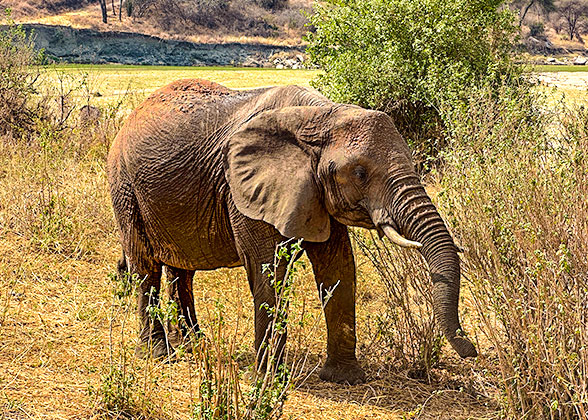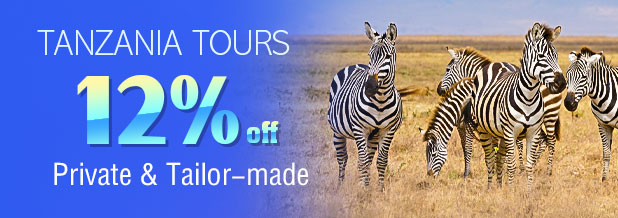Tanzania Travel Guide
Basic Facts of Tanzania

|
 Location: Tanzania is located in eastern Africa, south of the equator. It borders Kenya and Uganda to the north, Zambia, Malawi and Mozambique to the south, Rwanda, Burundi and Democratic Republic of the Congo to the west, with the Indian Ocean to the east.
Location: Tanzania is located in eastern Africa, south of the equator. It borders Kenya and Uganda to the north, Zambia, Malawi and Mozambique to the south, Rwanda, Burundi and Democratic Republic of the Congo to the west, with the Indian Ocean to the east. Area: 947,303 square kilometers (365,756 square miles)
Area: 947,303 square kilometers (365,756 square miles) Population: 55.6 million
Population: 55.6 million Language: Swahili and English
Language: Swahili and English Currency: Tanzanian Shilling (TZS)
Currency: Tanzanian Shilling (TZS) Time Zone: UTC+3
Time Zone: UTC+3 Capital: Dodoma
Capital: Dodoma Administrative Division: 31 regions
Administrative Division: 31 regions Religions and Beliefs: Christianity, Islam
Religions and Beliefs: Christianity, Islam
Top Things to Do in Tanzania
Tanzania consists of the mainland, Zanzibar and more than 20 islands. It is rich in tourism resources. Victoria, Tanganyika and Malawi, the three major lakes in Africa, are all on its borders. And you can see thousands of pink flamingos at Lake Manyara. Mount Kilimanjaro, the highest peak in Africa at an altitude of 5,895 meters (19,341 ft), is world-famous. Other reputed natural landscapes include the Ngorongoro Crater and the Great Rift Valley. Historical and cultural landscapes, such as the Slave Market in Zanzibar Island, the most ancient human site in the world, and the ruins of Arab businessmen, are also worth visiting.
Top 3 destinations: Zanzibar, Dar es Salaam, Arusha
Top 5 attractions: Serengeti National Park, Ngorongoro Conservation Area, Mount Kilimanjaro, Zanzibar Beaches, Kondoa Rock-Art Sites

See the Lion in Ngorongoro Conservation Area
|
Best Time to Visit Tanzania
The climate in Tanzania is mild throughout the year, so it’s suitable to travel there at all seasons. The best months are July, August, December and January. From June to October, the temperature is about 10 degrees Celsius (50 degrees Fahrenheit) in the northern highlands and about 23 degrees Celsius (73.4 degrees Fahrenheit) in the coastal area, and the weather is nice and warm. From December to March, the temperature is above 30 degrees Celsius (86 degrees Fahrenheit) in the daytime. It’s very sunny so you had better take things like sunglasses, sunscreen, and lipstick. Tanzania has two rainy seasons in a year: one is from Mid-March to the end of May, the other lasts from November to December. During the rainy seasons, you need to take waterproof clothing or rain gear. If you plan to climb the mountains, it is necessary to prepare fast-drying short sleeve tops, pants or shorts, and heavy clothes, like thermal underwear and down jackets.
 See more: Tanzania Weather
See more: Tanzania Weather

Sightseeing at Ngorongoro Crater
|
Transportation
Tanzania has three international airports: Dar es Salaam International Airport, Kilimanjaro International Airport and Zanzibar International Airport. Airport is available in most of the big cities, and small aircrafts are common in domestic routes. Many travelers choose intercity bus or small city bus. The small bus is poor-conditioned, yet with low fare. Besides, traffic jams are common, especially in big cities like Dar es Salaam. The railways in Tanzania are not so developed as road transport. Along the Tanzanian coast, there are four major ports: Dar es Salaam, Mtwara, Tanga and Zanzibar.
|
|
|
Tanzania Travel Tips
Before traveling to African countries, you should learn some basic knowledge about malaria prevention and get vaccines. Considering that there are various kinds of animals in this country, the clothes you will take had better not be bright-colored, so as not to irritate them. Remember to keep a distance from wild animals and obey the rules to keep safe. It is common practice in Tanzania to tip 10% for some services, for example, tips for tour guides and drivers are usually $10-15 a day.

Hippos in the Water in Serengeti NP
|
History

Buffalo with Birds in Serengeti
|
Geographical Features
Tanzania is high in the northwest terrain and low in southeast terrain. The eastern coast is lowland and the western plateau accounts for more than half of the total inland area. The Great Rift Valley runs north and south from the Malawi Lake. Mount Kilimanjaro in the northeast is the highest peak in Africa at an altitude of 5,895 meters (19,341 ft).


